Affiliate disclosure: This post may contain affiliate links. Please see our Privacy Policy.
Speedwell (Veronica sp.) are small blue wildflowers that grow worldwide. They’re both edible and medicinal and have been used by a number of cultures as a “cure-all” since antiquity. Modern studies are starting to verify some of these traditional uses.
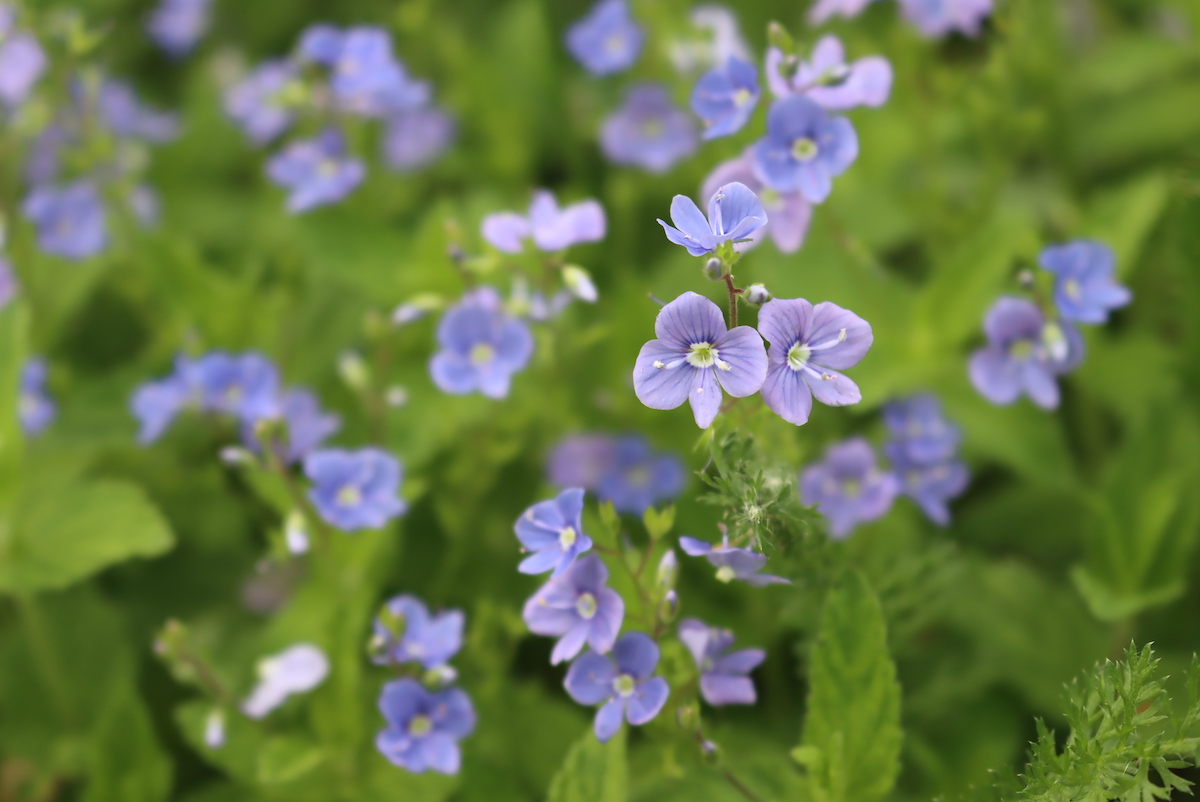
With a name like Speedwell, you know you’ve got some kind of medicinal plant on your hands.
This particular plant has been used as a cure-all in Europe, Asia, and the New World for millennia, and many of its traditional uses are now supported by peer-reviewed scientific studies.
They were popular in the Victorian era in formal gardens, where they were called by their Latin name, “Veronica.”
Their seeds are readily spread to new areas. No matter where you live, there’s a good chance you have Speedwell growing nearby.
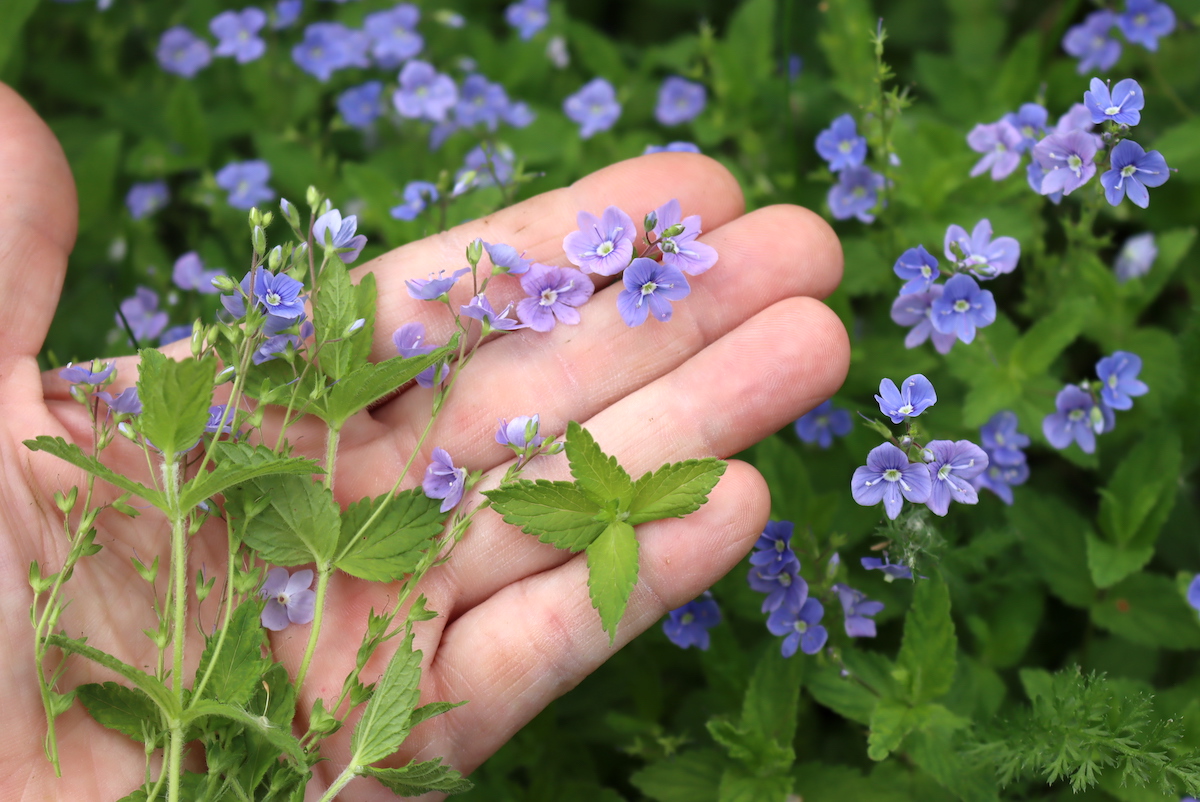
What is Speedwell?
Speedwell (Veronica sp.) is a genus of about 500 species of flowering plants. Speedwell is also known as gypsyweed and bird’s eye.
Many species are long-lived perennial, herbaceous weeds, but some species are annuals, and a few may be more shrub-like. Some species are low-growing, and several species and cultivars are used as groundcovers.
Speedwell grows worldwide. Some species, like American Speedwell (Veronica americana), are native to North America. Other Speedwell species, like Common Speedwell (Veronica officinalis), were introduced from Europe and have naturalized through large parts of the United States.
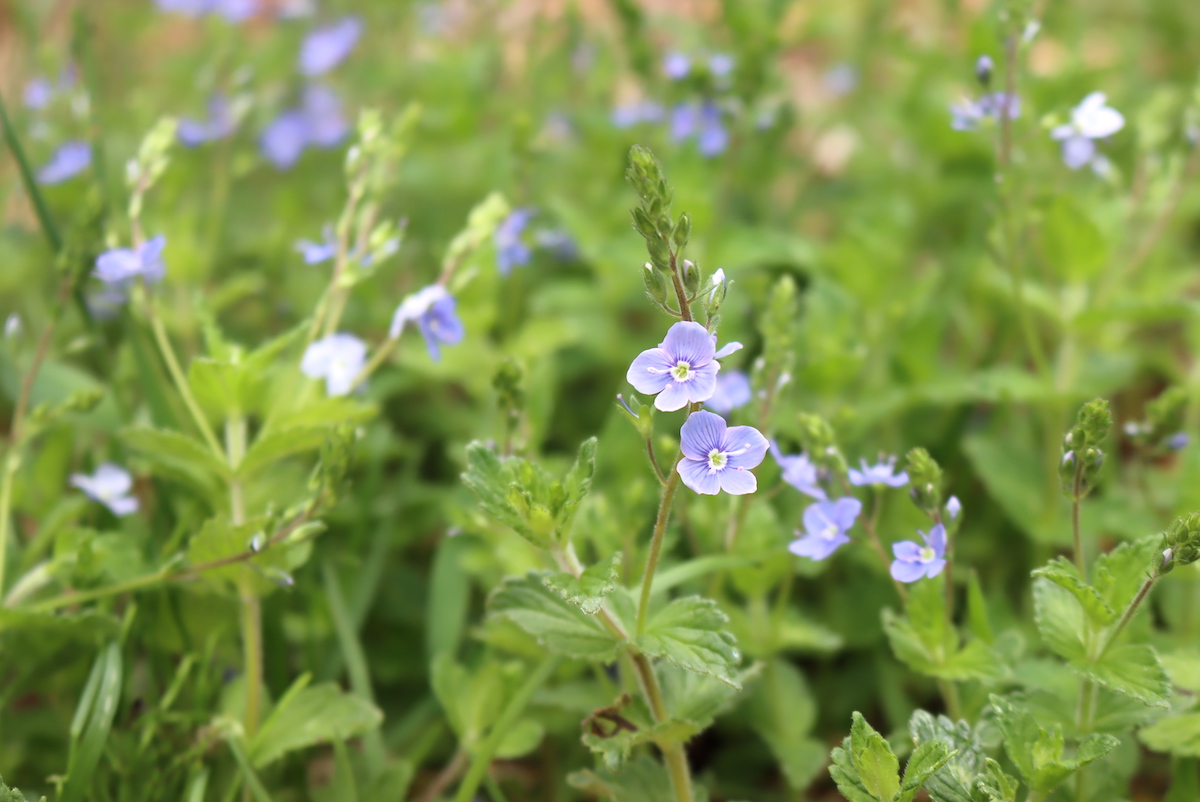
Is Speedwell Edible?
Speedwell is edible in its entirety. Most commonly, the flowers, young shoots, and leaves are used. Though it’s an edible herb, Speedwell is most widely used medicinally as a tea.
Speedwell sometimes grows in waste places, but you should avoid harvesting it in potentially polluted areas like roadsides.
It’s unknown whether Speedwell is safe for pregnant or breastfeeding women or if it has any interactions with prescription medications.
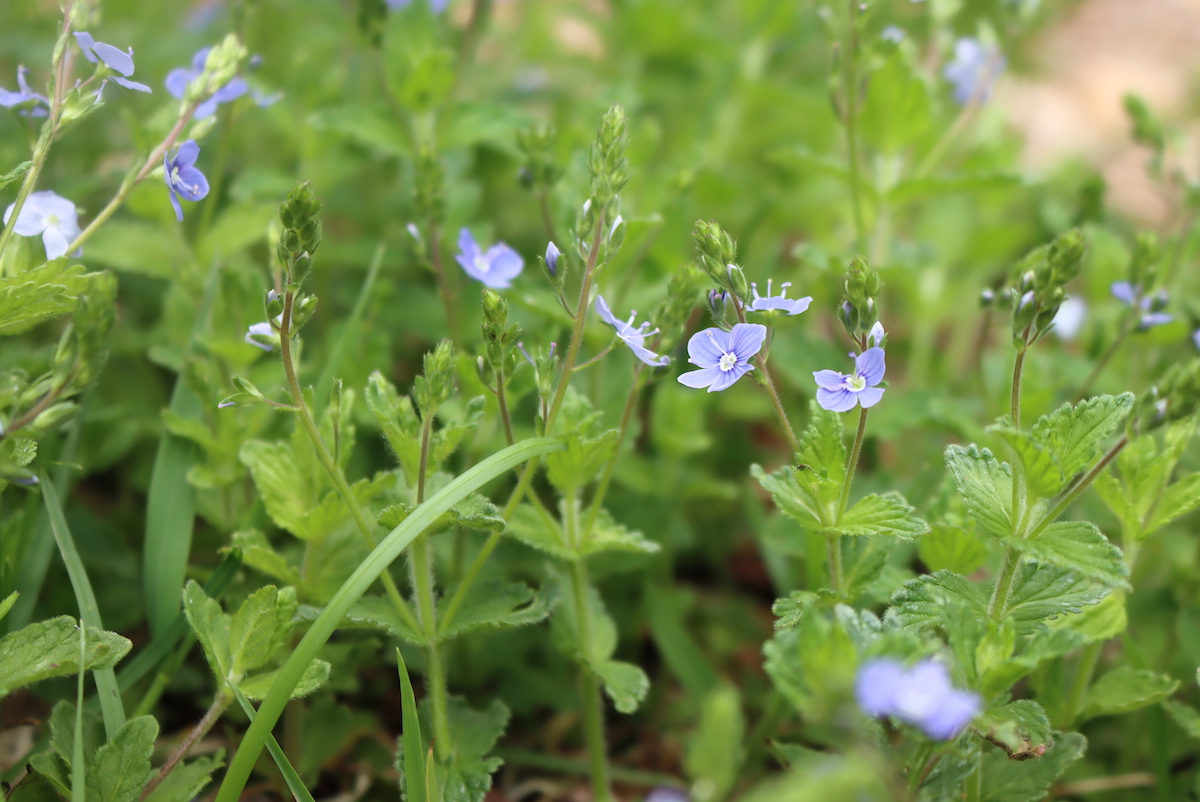
Speedwell Medicinal Benefits
Herbalists worldwide have employed different species of Speedwell to treat various conditions throughout the years. Speedwell was a commonly used medicinal herb among the Celtic and Germanic tribes. The Romans added it to their pharmacopeia when they came across the plant while conquering Europe, believing it to be a cure-all.
Many Speedwell species are also widely used in Chinese medicine.
Some Native American groups employed American Speedwell (Veronica americana) medicinally to treat congestion, asthma, and other respiratory issues. Colonists brought other species with them to the new world for medicinal use.
Internally, speedwell leaves and flowers were often used as teas. Speedwell tea was believed to have diuretic, expectorant, astringent, and diaphoretic properties.
Traditionally, herbalists would use the tea to treat coughs, congestions, sore throats, swelling, edema, digestive issues, kidney problems, gout, ulcers, and high blood pressure.
Additionally, Speedwell was sometimes made into a mouthwash to treat gingivitis and mouth sores or as a gargle for sore throats.
Herbalists also use Speedwell externally. Herbalists would use Speedwell in a lotion, wash, or bath to treat skin diseases, irritations, insect bites, burns, and wounds.
A few modern studies have also attempted to verify the traditional uses of Speedwell. Some research has indicated that Speedwell has anti-inflammatory, antimicrobial, and antioxidant properties. Speedwell extracts may improve the shelf-life of certain foods and be effective against food-borne bacteria like listeria (L. monocytogenes).
Interestingly, a 2015 study found that Speedwell (Veronica officinalis) extract has the potential as an anti-wrinkle agent for human skin.
Another study found that Speedwell’s antiviral properties make it a promising candidate for treating drug-resistant strains of the herpes viral infection.
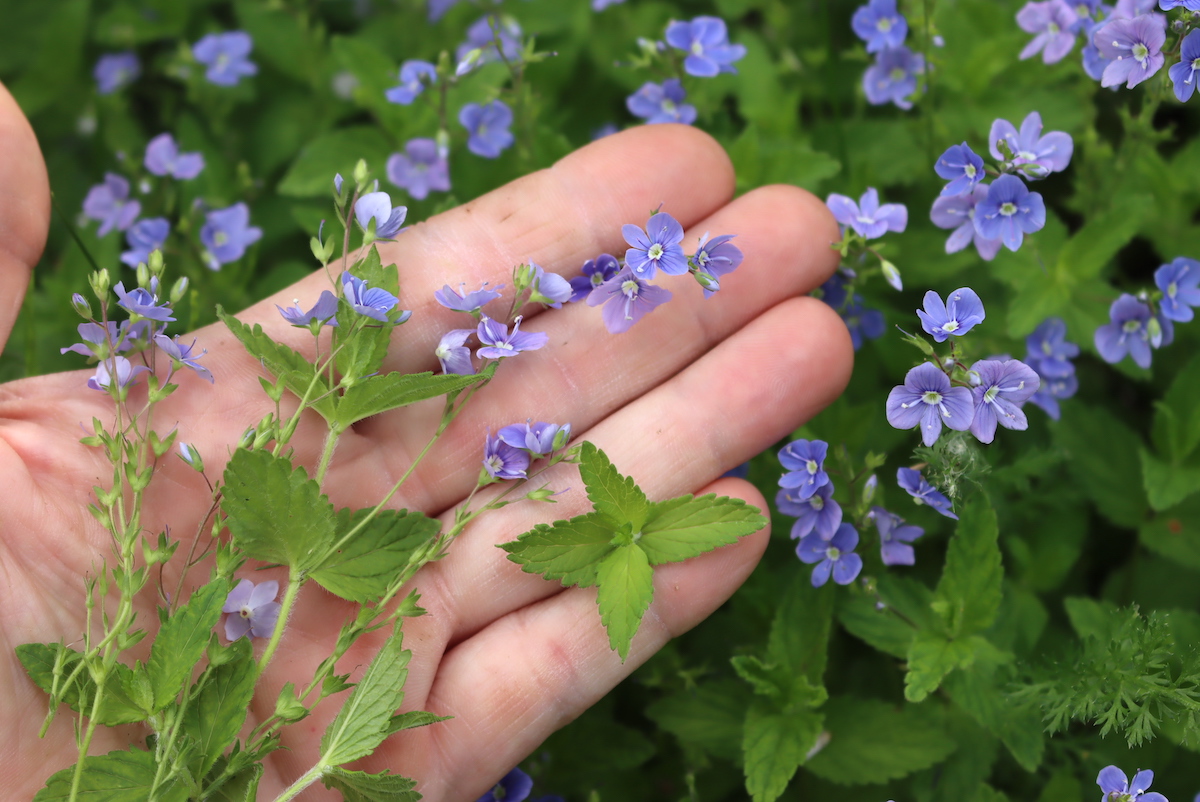
Where to Find Speedwell
Different species of Speedwell can be found worldwide. Many areas, like the United States, now have multiple species of Speedwell. Some of these, like American Speedwell (Veronica americana), are native to the US, while others, like Common Speedwell (Veronica officinalis), have naturalized here. Several cultivars may also be found in gardens worldwide or in areas where they have escaped cultivation.
Speedwell thrives in sunny places with moist, rich, loamy soil. You’ll often find it in disturbed areas like waste places, gardens, lawns, and pastures. A few species, like American Speedwell (Veronica americana), grow in moist areas like bottomlands, stream banks, and wetlands. It can adapt to poor, rocky soils but will not grow as well.
When to Find Speedwell
Speedwell thrives in cool, moist weather and will grow most in spring when the soil is cool and damp. In southern areas, Speedwell may emerge as early as March or April but won’t be up until May in northern areas.
Many herbalists recommend that for medicinal use, you harvest Speedwell in spring or early summer before it flowers.
Identifying Speedwell
Speedwell’s characteristics range widely from species to species. Some species are more upright, while others have a low, sprawling growth habit. Upright species tend to form flower spikes, while sprawling species have flowers on single stems from the leaf axils.
Speedwell species may be only four inches tall or as much as four feet tall.
Speedwell Leaves
Speedwell leaves are green and typically 1/2 to 2 inches long. It usually has ovate leaves, which may be broader or more elongated depending on the species. The leaves of most species are toothed or minutely toothed along the edges. Speedwell leaves are mostly oppositely arranged. Some species may have alternately leaves arranged near the tip of the stem.
Some varieties may have hairy leaves like Common Speedwell (Veronica officinalis), sparsely hairy leaves like Field Speedwell (Veronica persica), or smooth leaves like American Speedwell (Veronica americana).
Speedwell Stems
Speedwell has round stems growing up to 4 feet that may be smooth or hairy. Some Speedwell species have an upright growth habit, while others are more sprawling. The stems on sprawling species are often branched, creep along the ground, and root at the nodes.
Speedwell Flowers
The arrangement of Speedwell flowers varies with species. Some species, like Spiked Speedwell (Veronica spicata) form tall flower spikes up to four feet tall. More creeping species like Birdeye Speedwell (Veronica persica) grow on single stems from the leaf axils. The flowers typically have four rounded petals and are generally 1/4 to 1/2 inch in diameter.
Speedwell flowers may be white, blue, purple, or pink. A light blue or blue-purple is common among many of the wild species of Speedwell. The petals often have blue or purple stripes and white centers.
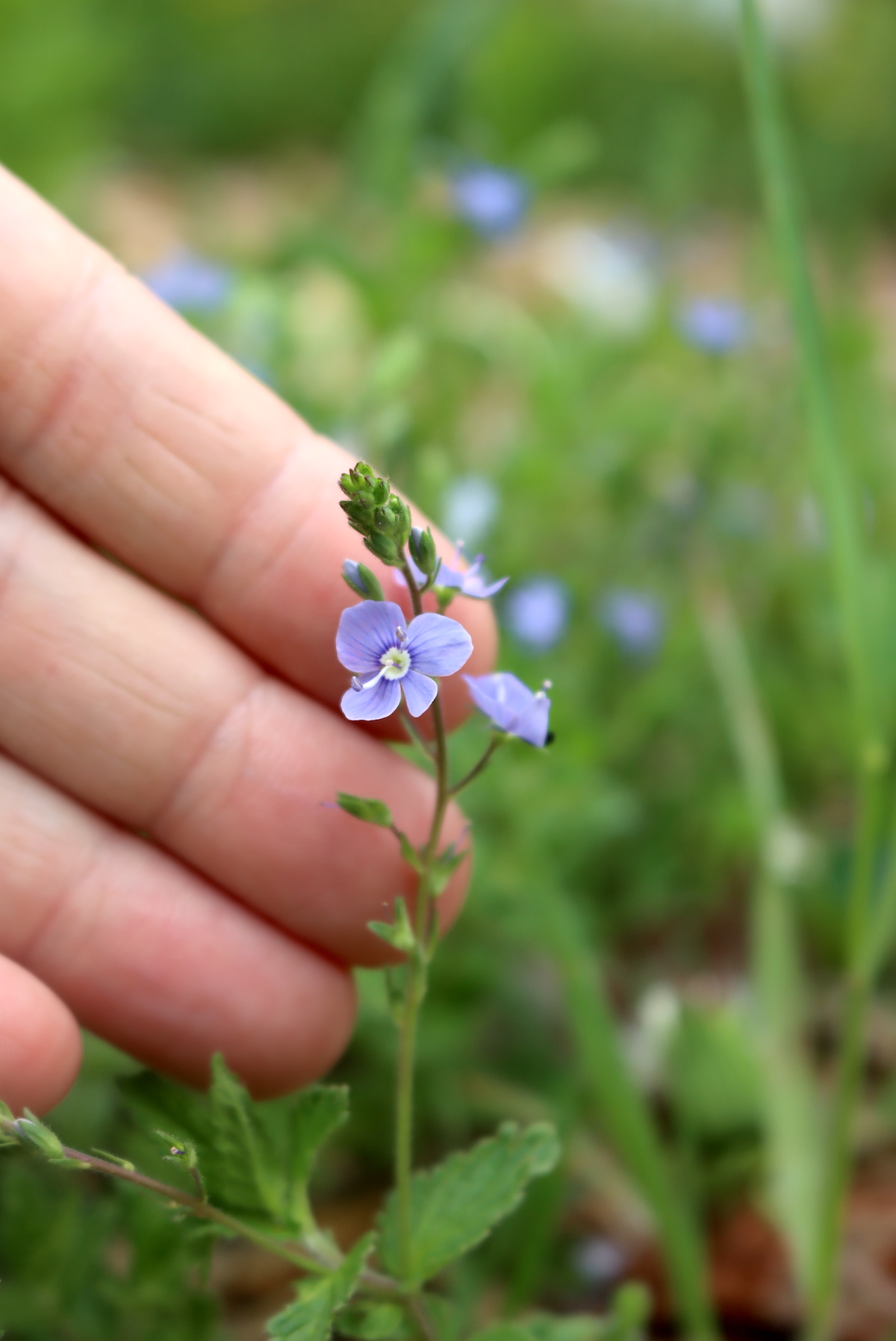
Speedwell Look-Alikes
Speedwell is sometimes mistaken for another medicinal herb American (Mad Dog) Skullcap (Scutellaria lateriflora). However, American Skullcap differs in a couple of noticeable ways:
- American Skullcap has tube-like flowers with two lips.
- American Skullcap has square stems.
The creeping species of Speedwell can also be confused with Ground Ivy (Glechoma hederacea). Fortunately, it differs in a few simple ways:
- Ground Ivy has fan or kidney-shaped leaves.
- Ground Ivy has funnel-shaped flowers with two lips.
- Some of Ground Ivy’s leaves are often reddish or purple.
- Ground Ivy has square stems.
More upright species of Speedwell can be mistaken for the purple-flowering species of Salvia (Salvia spp.). Salvia differs in two key ways:
- Salvia has tube-like flowers with two lips.
- Salvia has square stems.
Ways to Use Speedwell
Speedwell is edible but isn’t often used in cooking. Its sharp, astringent flavor generally makes it better suited as a medicinal herb. However, some people still enjoy it, and you can experiment with adding some to salads or soups.
You can easily reap Speedwell’s medicinal benefits by using fresh or dried leaves and flowers to make tea. In 19th-century France, it was often used as a tea substitute because of its bitter, tannin flavor and fragrance. You can also make it into a tincture. For external uses, you can add leaves and flowers to baths or infuse them in oils, lotions, and salves.
Speedwell is also an attractive ornamental for the garden. There are many Speedwell cultivars available today with showy flower spikes.
Historically, Speedwell was considered a lucky charm, especially for travelers. In Ireland, the blossoms were sometimes sewn into clothing.
Speedwell Recipes
- Try Speedwell tea or gargle with this quick recipe from Mountain Herb Estate.
- Make your own soothing Speedwell foot bath with this easy recipe from The Lost Herbs.
Edible Wild Weeds
Looking for other edible wild weeds?
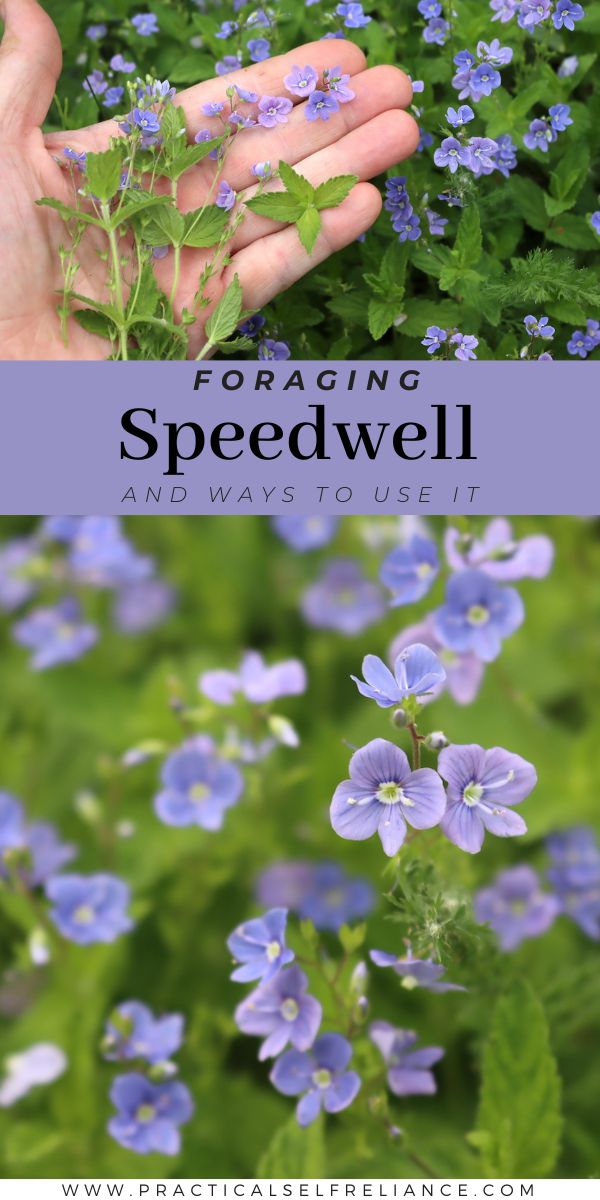

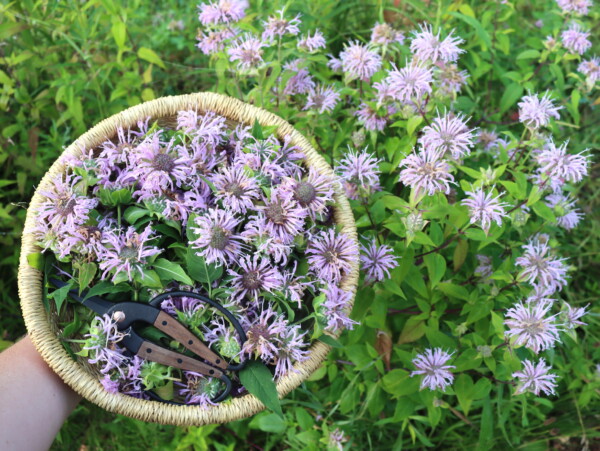
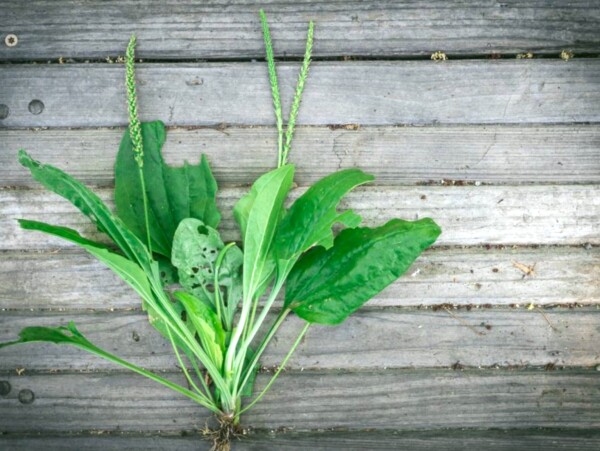
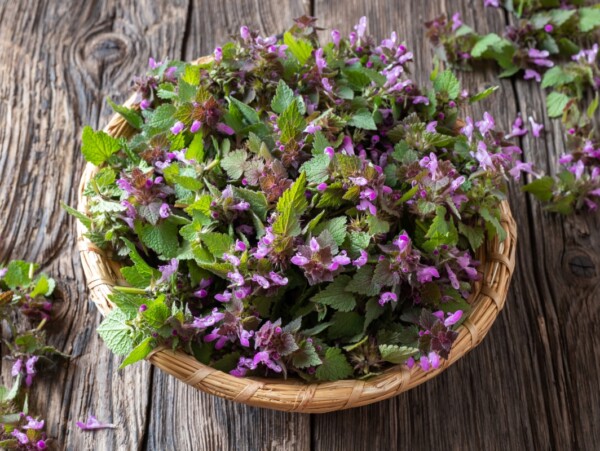
What percentage alcohol would be used to tincture Speedwell?
I tend to use 40% for dried herbs and a pure grain alcohol for fresh.